Staying Active Through the Winter
When the temperature outside has dropped below freezing, and the wind has started to blow and the snow has started to fall, many of us start to spend more time seeking comfort at home. Grilled burgers and light salads are exchanged for a hearty soup or casserole. Afternoon walks may be replaced with curling up on the couch. Evenings with open windows to welcome in the fresh summer air may be traded for nights spent sitting next to the wood stove.
People tend to focus on comfort during the winter and unlike in the warmer months may not have access to as much outdoor activity, said Dan Wheeler, PT, DPT, of Dan Wyand, P.T. & Associates. Despite this, he said, it’s important to try to stay active through the colder months.
“If we don’t maintain activity and exercise in the winter, when we try to get back into outdoor activities or doing chores once the weather warms up, there’s a chance of injury,” Wheeler said.
The good news is that you don’t have to go outside to exercise and remain active. Wheeler said you can do quite a bit with just your own bodyweight without the need for bands or weights.
“One of the first things I try to have people focus on once they’re inside is mobility,” he said. “Try to maintain or restore as much motion through your joints and muscles as you can.”
Wheeler suggested starting slow with a few exercises, and eventually integrating more repetitions and different exercises into your routine. He recommended focusing on strengthening the core, or your abdominal muscles, and the hips first. One of the easiest ways to begin strengthening your core, he said, is by lying on your back on the floor with your arms by your side and your legs extended. Tighten your stomach muscles and draw your belly button toward your spine.
“From there, you can start doing anything,” Wheeler said, adding that it’s important to do each exercise in repetitions and take frequent breaks. Here are a few exercises you can try, starting with three sets of 10 repetitions with a break between each set:
- Marching knees: While lying on your back with your arms at your side, bend your knees and place your feet flat on the floor. Raise one knee toward your chest and stop when it’s in line with your hips. Lower that foot and repeat with the other leg.
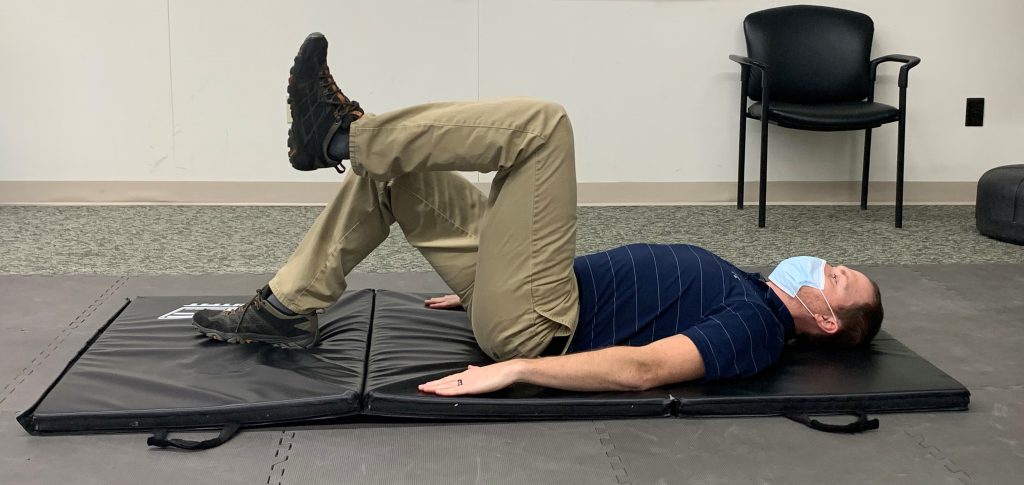
- Side-to-side bent knee drops: Lie on your back with your knees bent and feet flat on the floor. Keep your knees together and your back flat on the ground while you drop both knees to one side until you feel a slight stretch. Bring your knees back to the starting position and repeat on the other side.
- Bridging: Lie on your back with your knees bent and feet flat on the floor. Raise your hips to make a straight line from your knees to your shoulders. Lower your hips to your starting position.
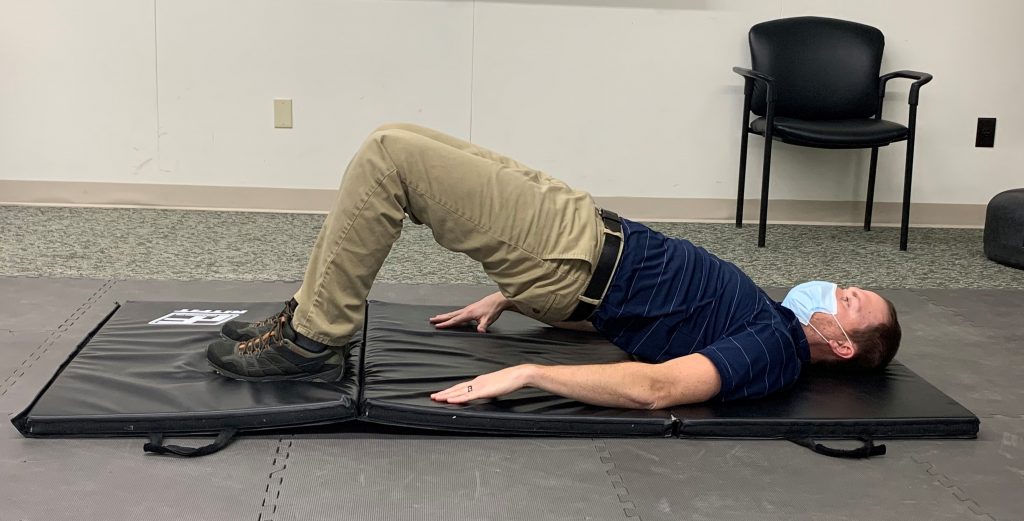
- Clam shells: Lie on your side with your legs stacked and knees bent at a 45 degree angle. Rest your head on your lower arm and use your other arm to help stabilize by placing it on the floor in front of you. Keeping your ankles together, raise your upper knee as far as you can without rotating your hip and without raising your lower leg off the floor. Return to the starting position.
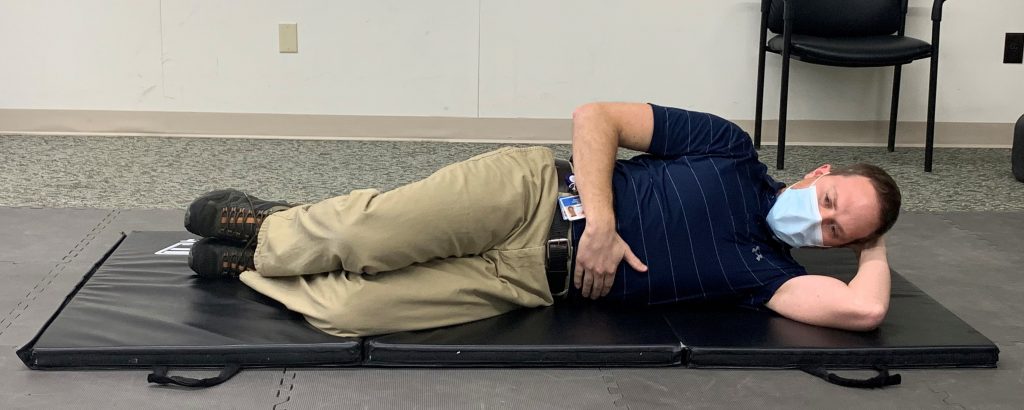
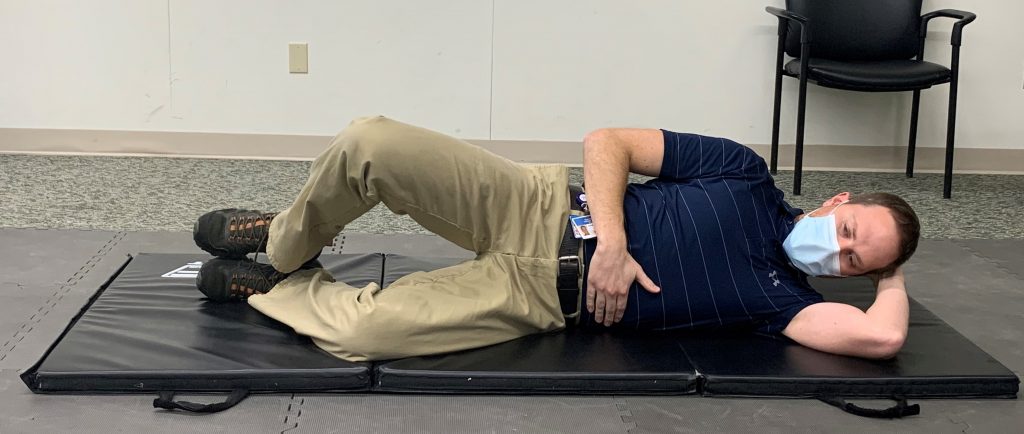 Sideways walk: Stand with your feet together, knees slightly bent. Step sideways until your feet are about hip-width apart, and then bring your other foot to join it.
Sideways walk: Stand with your feet together, knees slightly bent. Step sideways until your feet are about hip-width apart, and then bring your other foot to join it.- Elevated push-ups: Place your hands on the fourth or fifth step of a stairway with your body at an incline and do a push-up. Each week you can drop a step lower so you’re progressing toward the floor.
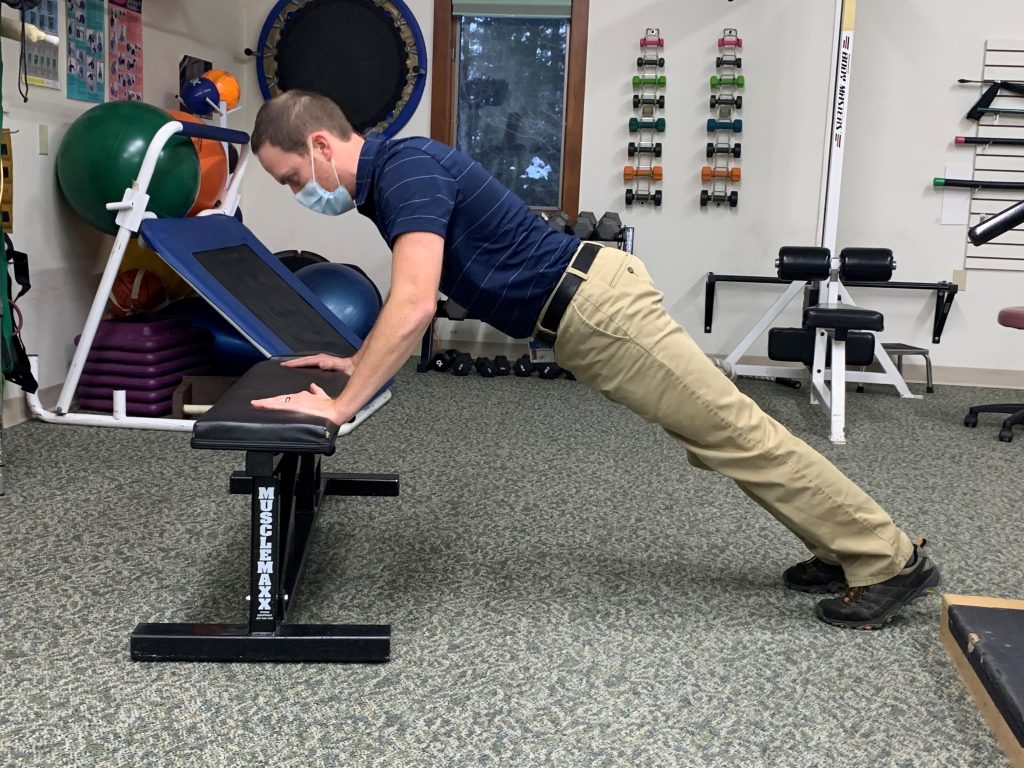
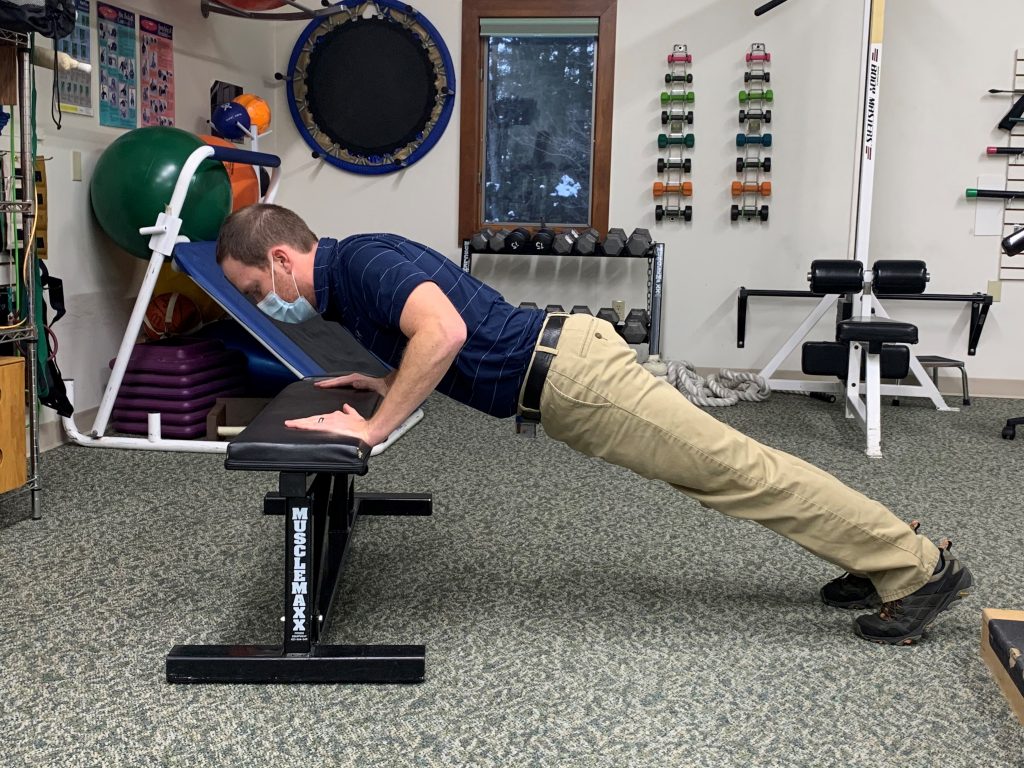
- Chair squats: Stand in front of a chair with your feet hip-width apart. Raise your arms in front of you and tighten your core as you slowly lower down toward the chair without sitting down. Stand back up and repeat.

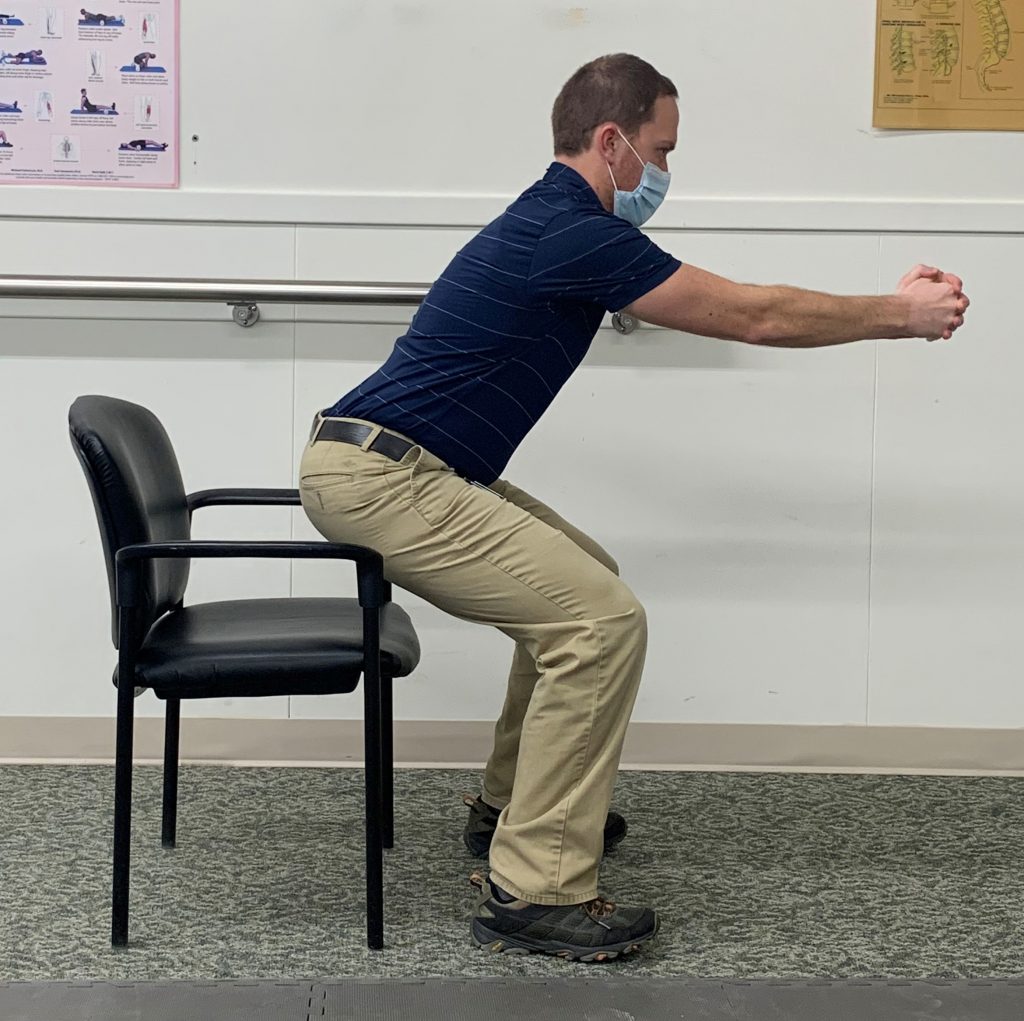
- Reverse lunges: Stand with your feet shoulder-width apart and your hands on your hips. Take a large step back with one foot. Lower your back leg as close to the ground as you can, creating a 90 degree angle in the front leg. To stand, press the heel of your front leg into the floor and bring your back leg forward. Repeat with your other leg.
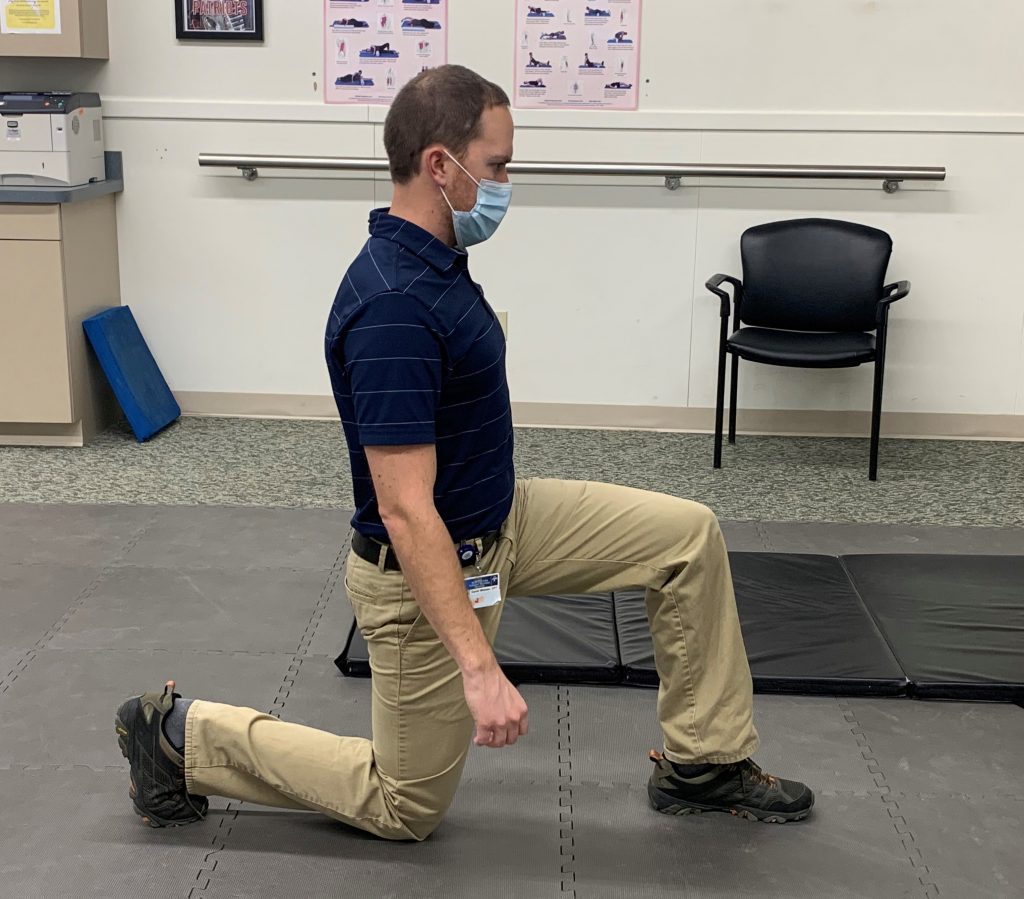
“These are different types of exercises that challenge your body but build progressions over time,” Wheeler said. “As you progress, see how well you can add sets and decrease your rest break.”
When you try new exercises, Wheeler said you should start slow, give your body time to recover and vary your activity.
“Try to do something different every single day that works a different part of your body so you’re not overworking the same area,” he said. “Give your body the rest it needs.”
Wheeler said these exercises are a great starting point see how your body responds. If you’re ready for an additional challenge, Wheeler said one next step would be to find a personal trainer or a fitness coach. If you want to expand your exercise routine but aren’t ready for a personal trainer, there are also a variety of free or low-cost apps available for download on your smartphone.
Sitemap | Privacy Policy | Site developed by Flek, Inc.
Northeastern Vermont Regional Hospital © 2020

